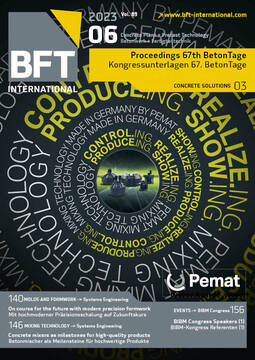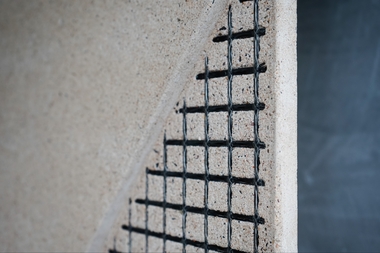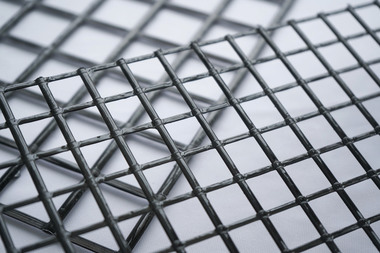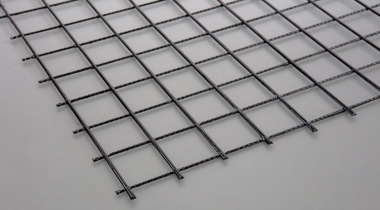National technical approval for Solidian Grid
The guideline “Precast elements with non-metallic reinforcement” compiled by the German Committee for Reinforced Concrete (DAfStb) is expected to be published as a standard (white print) in 2023. Its application requires approved reinforcement materials that provide the specified characteristic values according to Part 2 of the guideline. Part 4 of the guideline proposes test and evaluation methods for both rebar and grid types of FRP reinforcement. The company solidian
GmbH has decided to provide a national technical approval for its product, solidian Grid, on the basis of the draft guideline and the related test methods. The Institute of Structural Concrete at RWTH Aachen University has supported the approval procedure in the role of expert and has planned, performed and evaluated the required
tests. Research and industry work went hand in hand: a new bond testing
method for grid types of reinforcement was developed as part of the approval procedure, for example, which could be included
in the draft guideline at short notice. The evaluation methods for long-term tensile and bond behavior were also newly developed
or applied for the first time as part of the tests. A structural
difference between rebar and grid types of FRP reinforcement, which needs to be taken into account in all the tests and related evaluations, is the role of concrete splitting. In the case of steel rein-forcement or FRP-rebar reinforcement, concrete splitting
is usually suppressed in experiments and is implicitly covered
in the design by means of design rules or the concrete cover
in the component. However, grid types of reinforcement are primarily
used for thin, planar components that do not have stirrups or a large concrete cover. The design must thus explicitly prevent concrete splitting or the tests must be performed in such a way that concrete splitting is covered when specifying the bond strengths.








